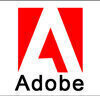ASP.NET Developer
60+ ASP.NET Developer Interview Questions and Answers

Asked in Cognizant

Q. What are the concepts of Object-Oriented Programming (OOP), and can you provide an example? Asp.net core Mvc related questions like middle ware. Solid principal In sql server -: Indexes, joins , trigger And one...
read moreKey OOP concepts, ASP.NET Core MVC middleware, SQL Server features, and CTE explained with examples.
OOP Concepts: Encapsulation, Inheritance, Polymorphism, Abstraction.
Example of Encapsulation: Using properties in a class to restrict access.
ASP.NET Core Middleware: Components that handle requests and responses.
Example of Middleware: Authentication middleware that checks user credentials.
SOLID Principles: Five design principles for better software design.
Example of Dependency ...read more

Asked in Capgemini

Q. All opps concept. What is constructor?, what is delegets? What is inheritance? What is abtract class.?
Explanation of OOP concepts like constructor, delegates, inheritance, and abstract class.
Constructor is a special method that is called when an object is created.
Delegates are type-safe function pointers used to reference methods.
Inheritance is a mechanism that allows a class to inherit properties and methods from another class.
Abstract class is a class that cannot be instantiated and is used as a base class for other classes.
ASP.NET Developer Interview Questions and Answers for Freshers

Asked in TCS

Q. What is the difference between a primary key and a unique key?
Primary key uniquely identifies each record in a table, while unique key ensures that all values in a column are different.
Primary key does not allow NULL values, while unique key allows one NULL value.
A table can have only one primary key, but multiple unique keys.
Primary key is automatically indexed, while unique key is not.
Example: Primary key for a table of students could be student_id, while unique key could be email_id.
Asked in G Tech Web Solutions

Q. For MVC what is model controller view, What is ActionResults,
MVC is a software architecture pattern that separates an application into three main components: Model, View, and Controller. ActionResults are methods that return data to the client.
Model: represents the data and business logic of the application
View: represents the user interface of the application
Controller: handles user input and updates the model and view accordingly
ActionResults: methods that return data to the client, such as a view or JSON data
Examples of ActionResult...read more

Asked in Novac Technology Solutions

Q. What is the flow of an MVC application?
MVC application flow involves the request being handled by the controller, which interacts with the model to retrieve data and then passes it to the view for rendering.
1. Request is received by the controller
2. Controller interacts with the model to retrieve data
3. Data is passed to the view for rendering
4. View generates the HTML response to be sent back to the client
Asked in Nvest Solutions

Q. Write an SQL query to retrieve the top 5 records from a table.
Use the SELECT TOP statement in SQL to retrieve the top 5 records from a table.
Use the SELECT statement to specify the columns you want to retrieve.
Use the TOP keyword followed by the number of records you want to retrieve.
Specify the table name in the FROM clause.
Add any necessary conditions in the WHERE clause.
Order the results if needed using the ORDER BY clause.
ASP.NET Developer Jobs




Asked in Altimetrik

Q. What is State Management in ASP.NET?
StateManagement in ASP.NET refers to the techniques used to preserve data between multiple requests from the same user.
StateManagement is important for maintaining the state of controls on a web page across postbacks.
There are different ways of managing state in ASP.NET such as ViewState, Session, Cookies, and Application state.
ViewState is used to store page-specific information that is preserved across postbacks.
Session state is used to store user-specific information that ...read more

Asked in Helm360

Q. Given a list of numbers from 1 to 100 with one number missing, how would you find the missing number?
One number is missing from 1 to 100. Find it's value.
Use the formula n(n+1)/2 to find the sum of numbers from 1 to 100
Subtract the sum of numbers given from the sum of numbers from 1 to 100 to find the missing number
The missing number is 5050 minus the sum of given numbers
Share interview questions and help millions of jobseekers 🌟


Asked in Capgemini

Q. What are the action listens. explain action filter
Action filters are used to perform additional processing before or after an action method executes.
Action filters are attributes that can be applied to an action method or controller.
They can be used to perform authentication, logging, caching, and other tasks.
Action filters can be used to modify the result of an action method.
There are four types of action filters: Authorization filters, Action filters, Result filters, and Exception filters.

Asked in TCS

Q. What is abstraction?
Abstraction is the concept of hiding complex implementation details and showing only the necessary information. Interface is a contract that defines the methods that a class must implement.
Abstraction allows us to focus on what an object does instead of how it does it.
Interface defines a set of methods that a class must implement, but it does not provide the implementation details.
Abstraction can be achieved through abstract classes and interfaces in object-oriented programmi...read more

Asked in A to Z Services

Q. Describe your experience creating a GridView and a form connected to a database.
Create a GridView in ASP.NET to display data from a database and a form for data entry.
1. Set up a database connection using ADO.NET or Entity Framework.
2. Create a GridView in ASP.NET to display data using <asp:GridView> tag.
3. Bind the GridView to a data source, e.g., a DataTable or List.
4. Implement a form using <asp:TextBox> and <asp:Button> for data entry.
5. Use SQL commands to insert data into the database when the button is clicked.

Asked in Adobe

Q. What tools have you used?
I have used various tools including Visual Studio, Git, JIRA, and SQL Server Management Studio.
Visual Studio for coding and debugging
Git for version control
JIRA for project management
SQL Server Management Studio for database management

Asked in TCS

Q. delete and truncate difference,roles in your previous project,garbage collector
Delete vs Truncate, roles in previous project, garbage collector
Delete removes rows one by one, while truncate removes all rows at once
Roles in previous project may include developer, tester, project manager, etc.
Garbage collector in .NET automatically manages memory by reclaiming unused objects
Asked in Epsilon International

Q. Write a .NET program to calculate library fines.
Calculate library fines based on overdue days and fine rates using .NET.
Define the fine rate per day, e.g., 0.50 per day.
Calculate overdue days by subtracting due date from current date.
Multiply overdue days by the fine rate to get total fine.
Example: If a book is 5 days overdue at $0.50/day, total fine = 5 * 0.50 = $2.50.

Asked in Aastra Technologies

Q. In ASP.NET, where is the session data stored?
Session data in ASP.NET is stored either in-process, out-of-process, or in a SQL Server database.
In-process storage stores session data in memory on the web server.
Out-of-process storage stores session data in a separate process, such as State Server or SQL Server.
SQL Server database storage stores session data in a SQL Server database.
Session data can be configured in web.config file using
element.

Asked in Cognizant

Q. What is the difference between abstraction and encapsulation?
Abstraction focuses on the outside view of an object while encapsulation deals with the internal workings of an object.
Abstraction is the process of hiding complex implementation details and showing only necessary information to the user.
Encapsulation is the process of wrapping data and methods into a single unit (class) and restricting access to the data from outside the class.
Abstraction is achieved through interfaces and abstract classes.
Encapsulation is achieved through a...read more
Asked in GNWebsoft

Q. What is the difference between Label and Literal control in ASP.NET C#?
Label control is used to display text while Literal control is used to display HTML content.
Label control is a lightweight control that displays text on a web page.
Literal control is used to display HTML content on a web page.
Label control is rendered as a span element while Literal control is rendered as the HTML content it contains.
Label control does not allow HTML tags while Literal control allows HTML tags.
Label control is faster than Literal control.

Asked in Clover Infotech

Q. What is the page life cycle in ASP.NET?
Page life cycle in ASP.NET is the sequence of events that occur during the processing of a web page.
Page life cycle consists of various stages like initialization, loading, postback, rendering, and unloading.
During initialization, the page and controls are created and their properties are set.
During loading, the page retrieves and processes the user input.
During postback, the page handles the events raised by the user.
During rendering, the page generates the HTML markup to be...read more

Asked in TCS

Q. What are the differences between abstract classes and interfaces?
Abstract classes can have implementation while interfaces cannot. Classes can implement multiple interfaces but only inherit from one abstract class.
Abstract classes can have constructors while interfaces cannot
Interfaces can only have method signatures while abstract classes can have both method signatures and implementation
Abstract classes can have access modifiers while interfaces cannot
Classes can implement multiple interfaces but only inherit from one abstract class

Asked in TCS

Q. What is the difference between a function and a stored procedure?
Functions return a value while stored procedures do not.
Functions can be used in SQL statements while stored procedures cannot.
Functions can be called from within stored procedures.
Functions can be used in views while stored procedures cannot.
Functions can have input parameters while stored procedures can have both input and output parameters.
Q. Out of all the candidates, why should we hire you?
I have the necessary skills, experience, and passion to excel in this role.
I have extensive experience in ASP.NET development.
I am a quick learner and can adapt to new technologies easily.
I am a team player and can work collaboratively with others.
I am passionate about coding and always strive to improve my skills.
I have a strong work ethic and am committed to delivering high-quality work.

Asked in TCS

Q. What is the difference between a class and an object?
A class is a blueprint or template for creating objects, while an object is an instance of a class.
A class defines the properties and methods that an object will have.
An object is created from a class using the 'new' keyword.
Multiple objects can be created from a single class.
Classes can inherit properties and methods from other classes.
Objects can have unique values for their properties, while classes define the structure of those properties.

Asked in Goldmedal Electricals

Q. What is sql and what are the joins
SQL is a programming language used for managing and manipulating databases. Joins are used to combine rows from two or more tables based on a related column between them.
SQL stands for Structured Query Language and is used to interact with databases.
Joins are used to combine data from multiple tables based on a related column.
Common types of joins include INNER JOIN, LEFT JOIN, RIGHT JOIN, and FULL JOIN.
Example: SELECT * FROM table1 INNER JOIN table2 ON table1.column = table2...read more

Asked in Brainvire

Q. Running Projects in Company with Technology
Running projects in a company requires selecting the appropriate technology for the project.
Consider the project requirements and constraints
Evaluate available technologies and their suitability
Choose the technology that best fits the project needs
Ensure the technology is compatible with existing systems
Train team members on the selected technology

Asked in Solitaire Infosys

Q. What is web technologies?
Web technologies refer to the tools and techniques used to create, manage, and deliver web-based applications and services.
Web technologies include programming languages like HTML, CSS, JavaScript, and server-side languages like PHP, ASP.NET, and Java.
Web technologies also include frameworks and libraries like React, Angular, and jQuery.
Web technologies are used to create websites, web applications, and web services that can be accessed through the internet.
Web technologies a...read more

Asked in Wall Street Consulting Services

Q. What is ASP.Net?
ASP.NET is a web application framework developed by Microsoft.
It allows developers to build dynamic web applications and services.
It supports multiple programming languages such as C#, VB.NET, and F#.
It provides a rich set of libraries and tools for building web applications.
It includes features such as authentication, caching, and session management.
It can be used to build web applications for desktop and mobile devices.

Asked in Infosys

Q. What are the different view states in ASP.NET?
View state is used to persist the state of a web form across postbacks in ASP.NET.
View state can be enabled or disabled at the page level or control level.
Different types of view state include enabled, disabled, and encrypted.
View state can be used to store values of controls on a web form between postbacks.

Asked in Capgemini

Q. Explain the MVC (Model-View-Controller) architecture.
MVC is a software architecture pattern that separates an application into three interconnected components: Model, View, and Controller.
Model represents the data and business logic of the application
View is responsible for rendering the user interface
Controller handles user input and updates the model and view accordingly

Asked in Chetu

Q. What are the differences between Interfaces and Abstract classes?
Interfaces define only method signatures while abstract classes can have method implementations.
Interfaces cannot have method implementations, abstract classes can.
A class can implement multiple interfaces but can inherit only one abstract class.
Interfaces are used for defining contracts, abstract classes are used for code reusability.
Interfaces are more flexible as they allow multiple inheritance through interfaces.
Abstract classes can have constructors, interfaces cannot.

Asked in 1point1 Solutions

Q. Tell me about runtime polymorphism.
Runtime polymorphism is the ability of a method to be dynamically bound at runtime based on the type of the object.
It allows a subclass to provide its own implementation of a method that is already defined in its parent class.
It is achieved through method overriding.
The decision of which method to execute is determined by the actual type of the object at runtime.
It enables code reusability and flexibility in object-oriented programming.
Example: Animal class has a method calle...read more
Interview Questions of Similar Designations
Interview Experiences of Popular Companies





Top Interview Questions for ASP.NET Developer Related Skills



Reviews
Interviews
Salaries
Users

















